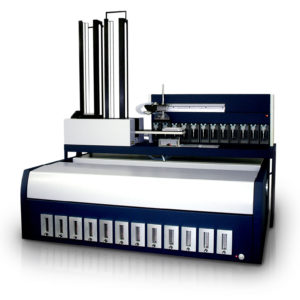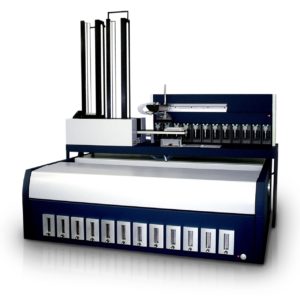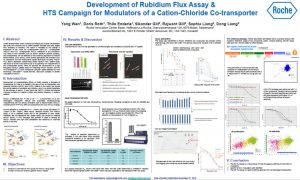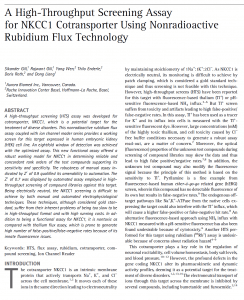
PRODUCT INFORMATION
ICR 12000- High-throughput Drug Screening Technology
The ICR 12000 is Aurora Biomed’s ultra-high-throughput ion channel screening platform, built to accelerate compound library evaluation with up to 60,000 samples per day.
Powered by atomic absorption spectroscopy (AAS) and advanced multi-channel automation, the system supports cell-based flux assays for both ligand-gated and voltage-gated ion channels, as well as electrogenic and electroneutral transporters.
With its unmatched throughput and sensitivity, the ICR 12000 enables researchers to efficiently assess QT liability and streamline early-stage drug discovery workflows.

ICR 12000 Ion Channel Reader
- Programmable and automated solution for up to 60,000 wells/day
- Automatic dilution, calibration and cleaning
- Integrated plate stacker & bar code reader
- Sample dilution not required
- High sensitivity
- On-line dilution
- Eliminates quenching effects associated with fluorescence
- Removes need to work with hazardous radioisotopes
- Avoids work restrictions posed by Rb’s short half-life
- Ideal for hERG channel assays
- Can assess both electrogenic and electroneutral transporters
- High Throughput: Up to 60,000 wells/day
- 12 Channel: Measures 12 samples at a time
- Minimum sample volume: 20 µl
- Accommodation: 96/384-well microplates
- Footprint: H.120 cm X W.95 cm X D.37 cm
- Fuel Source: Acetylene / Compressed Air
- Options: Plate Stacker / Barcode Reader
- Sensitivity: 0.05 ppm detection limit
- Precision: < 5% CV
For more publications on Aurora’s Ion Channel Reader, please click
Researchers from Roche performed high-throughput screening campaigns for modulators of a cation-chloride co-transporter using the ICR 12000.
Download their poster from the 2016 Ion Channel Summit to see how Roche developed high throughput rubidium (Rb+) uptake assay for measuring NKCC1 function and subsequently screened 1.2 million compounds using Aurora’s ICR 12000.
Development of a non-radioactive Rubidium flux assay to carry out high-throughput screening for electroneutral NKCC1 ion transporter.
Download the publication of the collaboration study with Roche to develop a high throughput rubidium (Rb+) flux assay for measuring electroneutral NKCC1 activity.
How does the non-radioactive flux assay compare to patch clamp?
The non-radioactive flux assay is considered a high throughput solution to investigate a broad range of membrane proteins including electro-neutral targets, to which conventional electrophysiology cannot be applied. The flux assay is capable of establishing the same drug potency rank orders as patch clamps.
What type of membrane protein targets can the ICR be applied to?
Membrane protein targets including voltage-gated and ligand-gated ion channels, co-transporters and pumps.
What is the general procedure of setting up flux assays?
Cells expressing the ion channels of interest go through a protocol of tracer loading, drug incubation, wash, treatment, and lysis before they are be fed into the ICR. The ICR can fully automate the sample analysis procedure.
What are the main differences between the ICR 8100 and ICR 12000?
The minimal sample loading volume is for 50 ul for the ICR 8100 and 20 ul for the ICR 12000. The ICR 12000 has a throughput of processing 60000 wells/day as compared to 5000 wells/day on the ICR 8100. The ICR 12000 also has an optional plate stacker.
What plate formats are compatible with the ICR?
Standard 96 and 384 well plates.
Who are some of the organizations using the ICR?
Our customers include Amgen, Merck, AstraZeneca, Roche, Pfizer, University of British Columbia, Heibei Medical University, and more.




